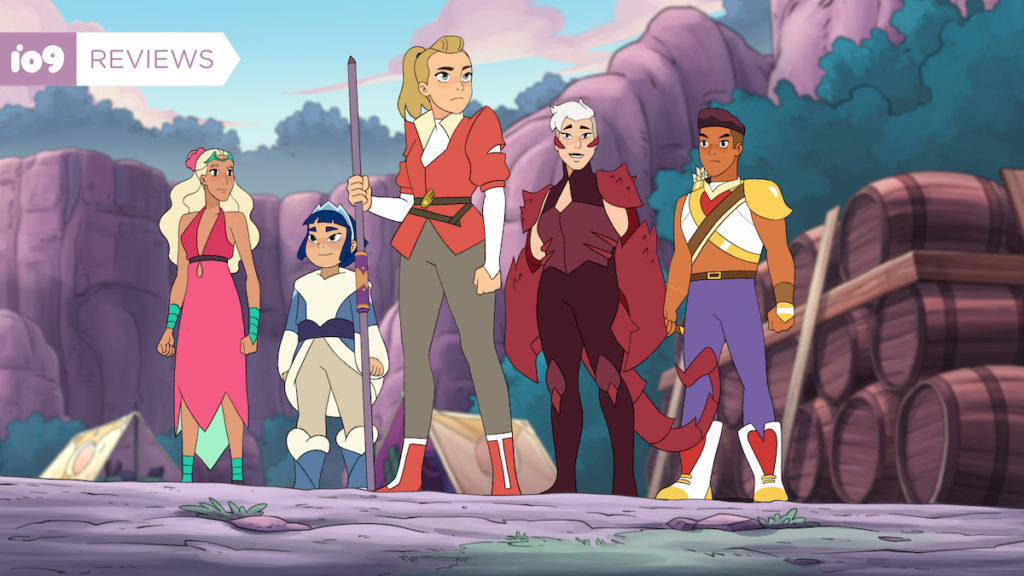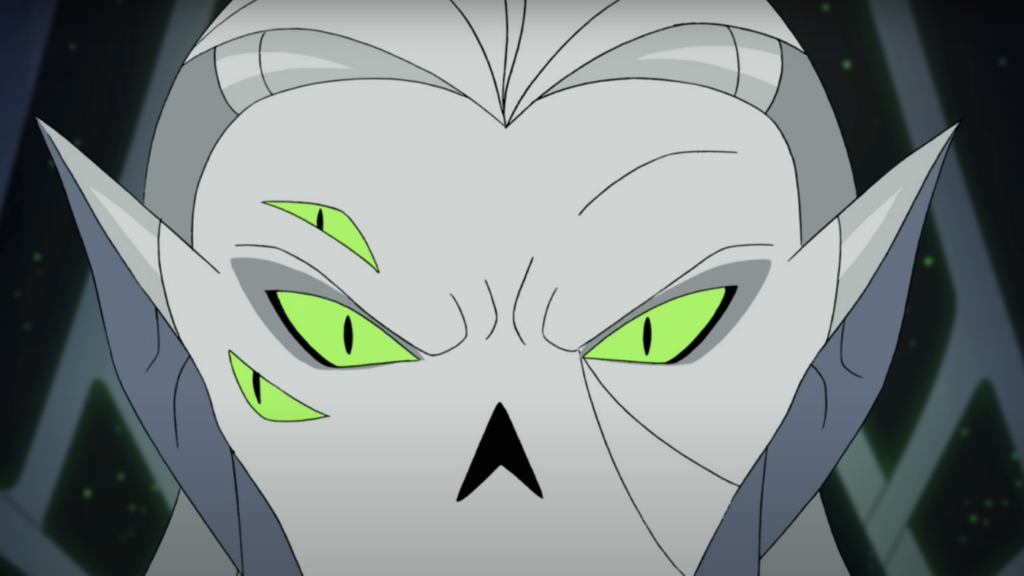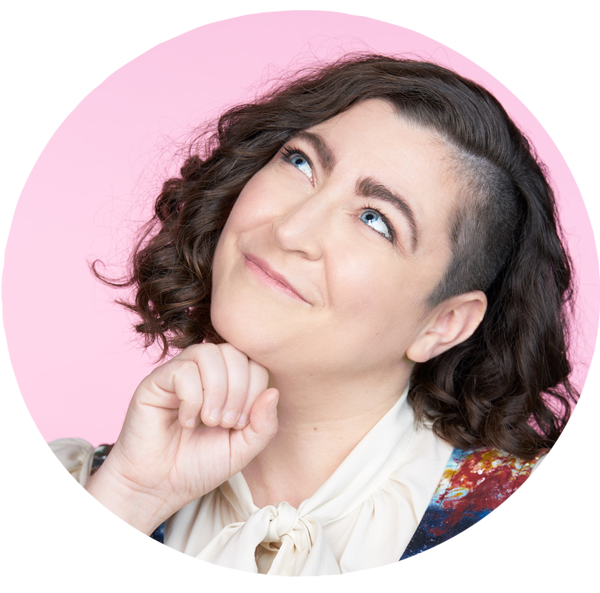
She-Ra’s Final Season Is Strong, Brave, and Damn Near Perfect
Io9: “She-Ra and the Princesses of Power’s” Final Season Is Strong, Brave, and Damn Near Perfect

In a post-Game of Thrones world, it’s hard to get your hopes up. Shows can spend years building toward something, only to let you down. It’s taken two years and five seasons to bring us to the end of Netflix’s She-Ra and the Princesses of Power, and I cannot imagine a better way for it to go out.
Season five of Noelle Stevenson’s She-Ra and the Princesses of Power is epic. It lays out everything the show has built over several seasons on the table with purpose, giving us a season where every episode feels like a legendary showdown only to have a bigger event take its place during the next. It all reminded me of the final season of Steven Universe. And much like that show, the moral of She-Ra is that trust, kindness, and love can triumph over adversity. Although it’s really, really hard this time.
The season starts with the rebellion on its last legs, and things only go downhill from there. Horde Prime (Keston John) has invaded Etheria with his massive army of robots and clones, making Hordak’s efforts to control the planet feel like child’s play. Every time the rebellion thinks they’ve gained some ground—with the amazing Entrapta (Christine Woods) working overtime—Horde Prime finds a new way to subdue them. Over and over and over again. The princesses struggle to keep everything from falling apart, which pushes them to confront their ongoing interpersonal issues while dodging endless attacks from an impossible foe. Although they manage to come together and become a team like never before, what good is that against an enemy like this?

Horde Prime is the perfect villain for this final season. While Hordak was volatile and quick to fits of rage, which made him vulnerable, Horde Prime is above all of that. Literally. He’s a quasi-religious leader who’s spent thousands of years conquering the galaxy with his “eternal light,” which kind of makes him a god (especially in his own eyes). He’s calm, centered, and, in a strange way, gracious in his malevolence. He knows he has no need for anger because he is in control of everything. It makes him far more terrifying a threat to Adora and her friends. A lot of this is thanks to Keston John’s—who plays Horde Prime, Hordak, and all the Horde clones—great performance. He’s managed to give each one their own brand of terror—or, in at least one case, a little bit of saucy fun.
The only true threat to Horde Prime’s rule is She-Ra, but she’s not exactly coming to the phone right now. Adora (Aimee Carrero) willingly broke her sword last season after finding out how the First Ones had used She-Ra as a weapon, and Adora is struggling to find out who she is without her. At first, it means she keeps jumping head-first into danger, as she is wont to do. But eventually, Adora starts to emerge as a true leader; taking a lot of inspiration from Bow (Marcus Scribner), who comes into his own this season. The more she strives to inspire and help her friends, the more she taps into the heart of who She-Ra truly is.

Then there’s Catra (AJ Michalka), who shares the spotlight with Adora as a dual star of this final season. This is their story. After years of scheming and clawing her way to something resembling the top, Catra’s been brought to her lowest point. Her efforts to rise in Horde Prime’s circle the way she did in Hordak’s are pointless because he has no use for her. It’s the worst place for Catra to be because her only desire is to be valued. At least, that’s what she thinks. Deep down, so deep she can’t even see it, all Catra really wants is to be loved—something fans who’ve been with the show from the very beginning probably already knew.
There’s a reason She-Ra and the Princesses of Power has focused just as much on Catra as it has on Adora. Their relationship is the backbone of this series and this is the season where we get to see exactly what that means. In spite of everything they’ve done to each other, Catra and Adora are connected. It’s their time together growing up in the Horde, the trauma they endured then and after, and the ongoing obsession they’ve had over each other while on opposing sides. There’s a bond there that can never be broken. Carrero and Michalka pull out some fantastic performances, showing how much they’ve grown with the characters just as we have.
While it is an exciting season, there are some issues with the pacing. After all, there are a lot of loose ends to tie up in a short amount of time. Because there’s so much to get through, not all of them are addressed in a satisfactory way. For example, season four ended with Adora and Glimmer (Karen Fukuhara) in a rough spot after Glimmer had pulled rank on her and Bow to activate the Heart of Etheria—the very thing that brought Horde Prime to their home and started this final showdown. This season shows us how Bow was impacted by Glimmer’s betrayal (something that was missing last season and was a welcome addition), but Adora’s lingering baggage was mostly dropped. There are also some key characters who are pushed to the side a bit more than they deserved, notably Double Trouble, Huntara, and Madame Razz. It’s not a huge deal, but it does leave some things open-ended.
It’s been a long journey to get to where we are now, and not every step has been perfect. Let’s not forget how the second season was split in two for no clear reason, to the story’s detriment. But it feels like it was all building to something, and that something was the final season of She-Ra and the Princesses of Power. The princesses have been through hell, high water, and Dungeons & Dragons. We’ve seen their powers grow just as we’ve seen them grow as people. While I would’ve liked a little more time with Mermista (Vella Lovell), Perfuma (Genesis Rodriguez), Frosta (Merit Leighton), and Scorpia (Lauren Ash), I understand why we didn’t. This was Adora and Catra’s story, perhaps all along, and it felt so good to finally bring it home.
She-Ra and the Princesses of Power started out at a disadvantage. The series faced backlash for not conforming to what fans of the original 1980s cartoon thought the reboot should be (let’s not forget how mad some “fans” got over the fact that She-Ra was wearing shorts). Looking back, it all seems so pointless. Over the past five seasons, She-Ra has grown beyond its source material and created something special that the cast and crew should be proud of. It’s built on the legacy of shows like Steven Universe and The Legend of Korra, itself becoming a series whose impact will be felt in animation for years to come, and I look forward to seeing who the sword chooses next.

Random Musings:
- A big theme this season is about the power of forgiveness. Several characters, like Glimmer, have made terrible choices and this is where we see whether they can (or even want to) atone for them. It’s a complex subject and She-Ra handles it well, especially in how it demonstrates that forgiveness is never a blank slate. Some choices change you and things can never go back to how they were before.
- Netossa and Spinnerella get the award for Most Improved this season. The couple started off as little more than background characters and their powers kinda served as punchlines. But their relationship was the basis of a major plot point this season, bringing the two characters to the forefront for the first time. Plus, we finally get a chance to see them show off their abilities. You’d be amazed at all the things wind and nets can do.
- My favorite episode of the season is probably “The Perils of Peekablu.” It continued the show’s trend of having a one-off episode that pays tribute to other genres—this one being a spy thriller and heist story. I won’t spoil what happens but, much like the previous genre-dancing one-offs, it will find ways to surprise you.
- “ADVENTURE!”


Recent Comments